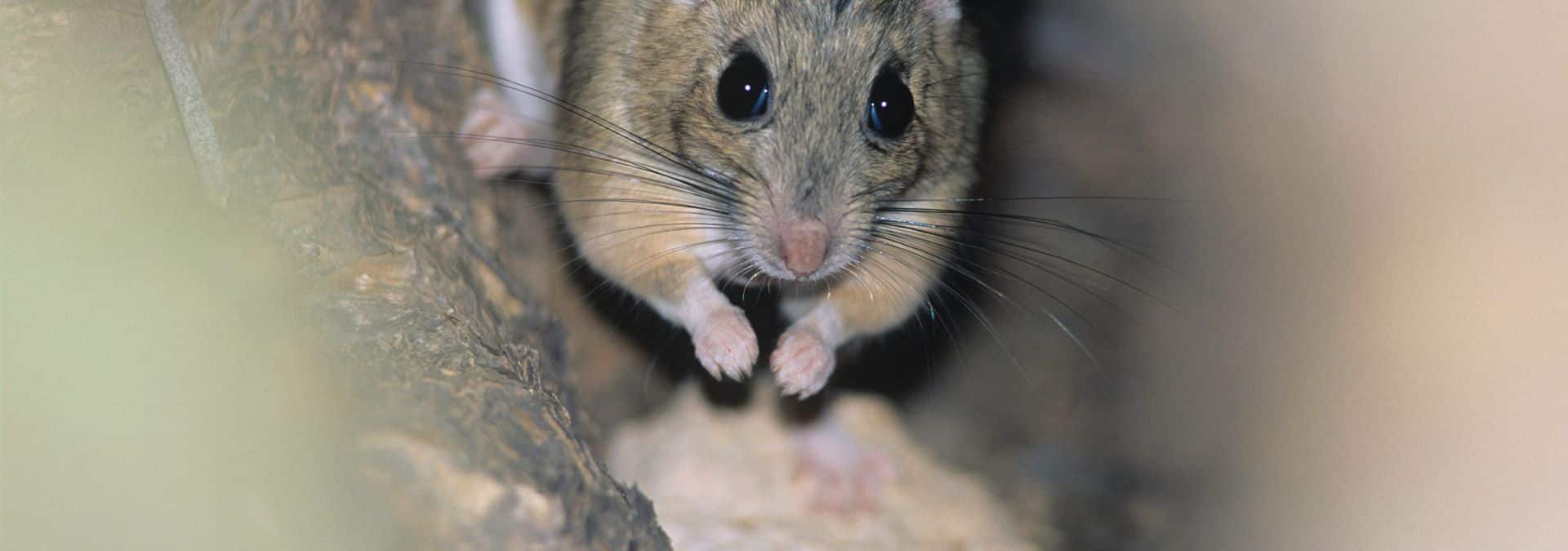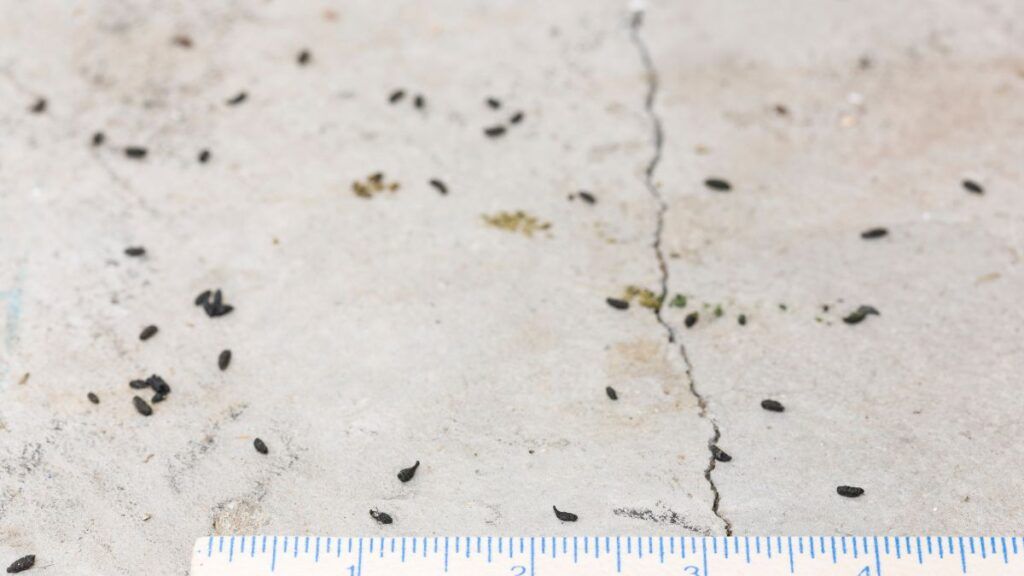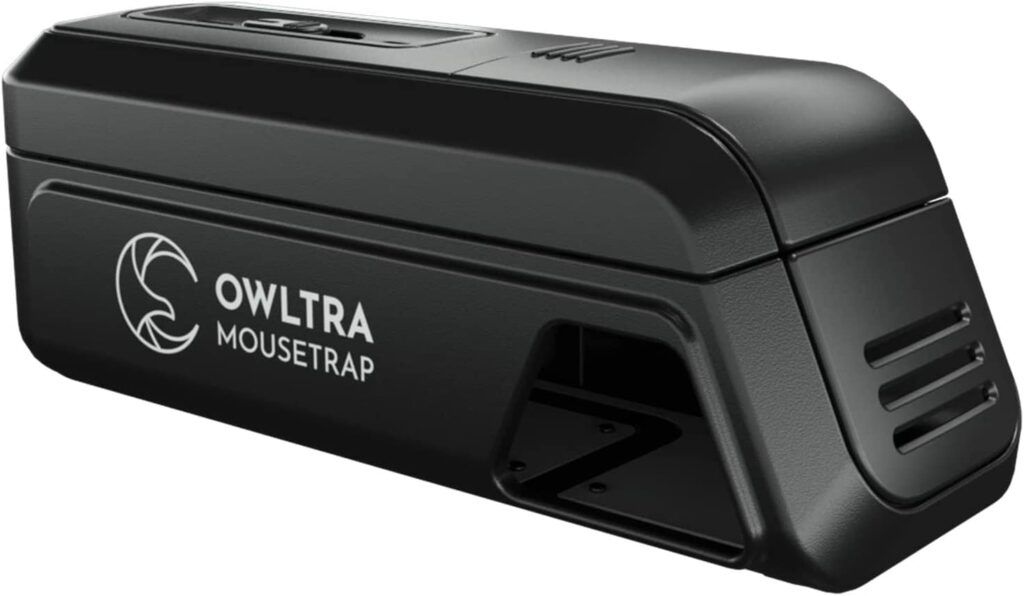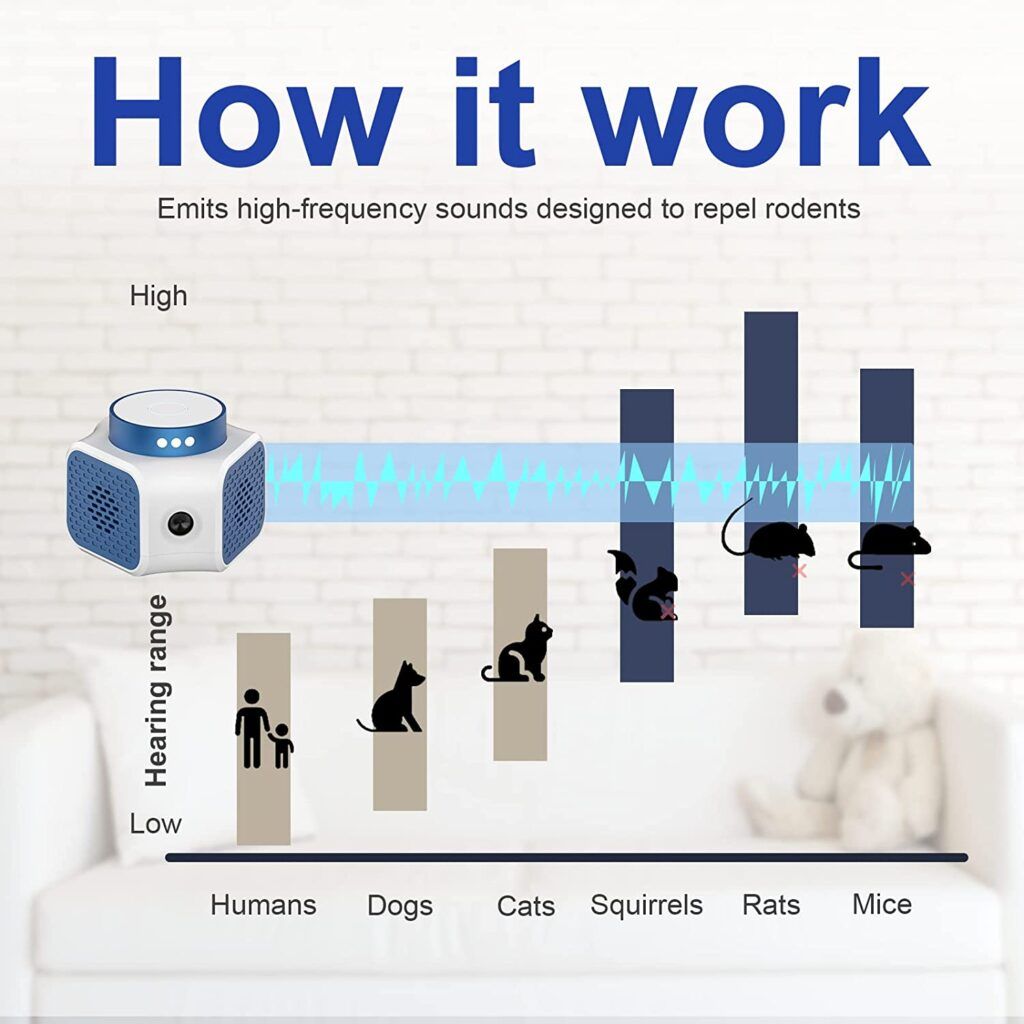How to Get Rid of Mice in a Camper (5 Effective Ways)

We've already discussed how to prevent mice from getting into your RV. Now, here's how to get rid of mice in a camper if the furry fiends have already made their way inside…
No one likes a pest. Especially small, furry ones that can carry disease and cause serious damage to your RV. That is why if you find yourself with an RV mouse problem, you will want to get rid of those unwanted creatures as quickly as you can!
Recently, I wrote an article about how to prevent mice from getting into your RV. Prevention is, of course, the best way to avoid a mouse problem in the first place! Blocking entry points with a little steel wool, or getting rid of a coveted food source, can go a long way.
But what should you do if your prevention methods don't work? How do you get rid of mice in a camper that has already been invaded?
If you buy something through our links, we may get a small commission at no extra cost to you. It helps keep our lights on so we can continue to provide helpful resources for RVers. Read our full affiliate disclosure here.
How to Identify a Mouse Problem
If you have never had a mouse problem, then you might not know what to look for to identify that you do. The most telltale sign of mice, aside from seeing them in the trailer, is the occurrence of mouse droppings.
You might also notice strong smells coming from a cabinet, most likely arising from mice urine.
Another sign of a rodent problem is finding chewed-up food, fabric, or paper items. These are also signs that the mouse is making a nest. So, you really need to act quickly before your problem is multiplied!

How to Get Rid of Mice in a Camper
Mice can fit through a small hole the size of a dime. Mouse deterrents, like closing off potential entry points with spray foam, are the best solution to prevent mice from entering your rig.
But it may already be too late. So what do you do when mouse repellent has not worked, and you already have a pest issue? Here are five things you can do…
1. Store Food Items in Sealed Containers
If you notice a critter issue in your rig, the first step you will want to take is to properly store your vulnerable food items. These are food items that are not kept in sealed glass or metal containers.
Things to consider storing in sealed glass or metal containers are as follows:
- Uncooked pasta
- Baking ingredients like flour and sugar
- Coffee creamers
- Chips
- Nuts
- Nutrition bars
- Dried fruit or trail mix
- Pet food
Mice will not be able to smell these items as easily if stored in sealed containers. Even if they can smell them, they won't be able to access them. So, they'll likely move on to an easier food source.
2. Use Mouse Traps
Trapping mice is the traditional method of getting rid of mice. There are both catch-and-release and humane kill traps available to choose from.
I've only included mouse traps that are considered humane.
Box Traps

One popular type of trap is called a mouse box trap. It is a live catch-and-release trap, meaning the mouse will not get killed by the unit. Many people like these because they are considered humane traps.
These traps are boxes that contain bait inside, like peanut butter. The mouse enters the box to eat the bait but cannot exit it once it is inside.
You can then take the box with the contained critter to release it somewhere else outdoors.
Other folks take the entire box and throw it away, with the mouse still living inside. That is not humane! While I despise pests, I don't like the idea of torturing any sort of wildlife. I hope that if you use these traps, you will release the rodent somewhere or dispatch it in a humane way.
Also keep in mind that you do not want to use this kind of trap unless you're checking it daily! These humane traps become inhumane if you leave the animal trapped inside for a prolonged period.
Spring Traps
The other main type of mouse trap is the classic spring trap. You open the trap, setting a spring arm, and place bait on the trap. When the mouse eats the bait, its weight releases the spring, and the mouse is killed.
Once the mouse is caught in the trap, you pick up the entire thing and place it in the trash.
While it is not particularly enjoyable to have a dead mouse on your hands, these traps are instantaneously effective. They are designed so the mouse won't suffer.
Electronic Traps

Another more humane type of trap on the market is an electronic mouse trap. It looks like a small, hollow box with openings on both sides. You place bait in the center, and when the mouse enters the trap and places two feet on it, it gets electrocuted. Another one with good reviews from our RV Lifestyle Team is this one.
I know this sounds rather gruesome. However, like the spring trap, the mouse dies almost instantaneously. It will not suffer like it would on tape or glue traps (which I don't recommend). This type of trap is considered a more human way of killing a mouse.

3. Utilize Poisons
Many people kill mice using rat poison. These essentially poison the pest, killing it later.
While poison can be an effective way to rid yourself of unwanted critters, there are two major drawbacks to poison.
First, the rat or mouse can succumb to the poison before escaping your RV. If that happens, it may die inside your rig and the smell is horrific. In most cases, they will die in a hidden compartment or inside walls, making getting rid of them and their smell very difficult.
The other issue is that poison is a dangerous hazard if you're traveling with pets or children. You must be extremely careful when using poison if you have vulnerable pets or children camping with you. This is especially true if you forget where you placed the poison when you take your RV out of storage.
4. Try a Natural Approach
Many people like the idea of getting rid of rodents by using a natural method. Essentially, this approach repels the critters once they are in the RV, but in a way that does not harm them.
Many folks swear by using essential oils to get rid of pests. Many different oils are said to repel creatures, such as peppermint oil, lavender, mint, geranium, and pyrethrum. Small rodents don't like the smell of peppermint and other natural essential oils, so they will leave the rig on their own.
Pine needle spray is supposed to have the same odorous effect, too.
In our article about preventing mice infestation, I talked about how Irish Spring soap bars and dryer sheets are often touted as deterrents. I was skeptical of this, so I asked RVers to weigh-in in the comments and in our RV Lifestyle Facebook group.
The overwhelming consensus was that Irish Spring soap and dryer sheets do not work. The mice happily chew on the soap and use the dryer sheets for their nests.
5. Ultrasonic Devices

There is one other solution to pests that I have not yet mentioned. It is called an ultrasonic mouse deterrent, which are sometimes called electronic repellants.
An ultrasonic device is an electronic device that uses high-pitched sound to cause discomfort to rodents. Thus, the rodents will retreat in the opposite direction.
Some people love these devices because they meld technology and non-invasive pest repellent. They do not have an odor or an annoying sound (that humans can hear).
Ultrasonic repellents claim to be able to repel numerous pests, including:
- Mice
- Rats
- Insects
- Bed Bugs
- Silverfish
- Fleas and Ticks
Tips & Proper Care for Storing Your RV
Like what you see in these videos? We'd appreciate it if you would Subscribe to our YouTube Channel (easy to do right here) and consider “ringing the bell icon” to be notified of any new video from us. 🙂 Thanks!
Sometimes you have to say goodbye and store your RV away for a season. This involves more than just storing it away. We chat with a storage expert from the National Indoor RV Storage Center and talk proper indoor/outdoor RV storage tips and techniques.

Get the Home Study Course today and worry about the road, not the repairs!
Every time you move your RV it's like driving through a hurricane during an earthquake. Parts break and many items need to be maintained, this program will show you how you can save time and money by gaining the confidence to take on the majority of the issues you’ll come across. Don’t get caught with your RV in the shop! Learn how you can maintain and repair your RV at your own pace and at the most convenient time for you! This course is produced by the National RV Training Academy.

I suggest a good quality bucket trap. The trouble with the spring traps is that they tend only to catch one mouse at a time. If you are storing your rig, a bucket trap will reset itself after each capture. The trap is a lid and ramp for a 5 gallon bucket. You smear a little peanut butter as bait. The mouse or rat goes to have the peanut butter and the floor flips them into the bucket. If you want to make the trap lethal, you add water but I just generally let them out near a creek or field away from people.
Jiffy cornbread mix and backing soda mixed dry 50/50. Put the dry mix in a container with a hole in it for the mice. The mice will feed on the mix and die. It is a single kill so it will not harm something that eats the mouse. I put the dry mix in a plastic container with a piece of firewood over it. The baking soda expands once they eat it, rodents cannot burp or fart so they die. Note it will also kill other rodents like chipmunks so that may be a consideration. This should be done outside the RV so the mice do not die in the RV.
Concerning winter storage in the cold: Here is what I do: 1) Empty completely any water in the rig and fill the plumbing with Non-toxic antifreeze. Also make sure you put some in all the P-traps like sinks and shower and a bit in the toilet./Empty all grey and black tanks 2) Batteries should be removed and stored with an intelligent charger on all the time & make sure the levels are up to par. 3) Place wood blocks under the tires about 2 inches high 4) Put Sta-Bil Gas treatment in the gas tank 5) Also put either charcoal or cat litter to absorb extra humidity and leave roof vent cracked open if you have Vent covers on them. 6) I also put some dryer sheets and Irish spring soap bars to deter mices.7) Make sure you air up your tires at proper levels 8) remove any liquids inside the rv like cleaners etc and batteires from smoke detector and Finally I give the coach a good wax coat & nothing wrong with putting some scent jars inside to come back to a good smelling unit . /Notice I leave my unit outside for the full duration of the winter without verification as I am away for 5 months NOTICE: I have done this for the last 6 winters and never had a problem. / Hope this can help others
Thank you for sharing!
Any method that leaves a trapped or dead animal behind will be attacked by another mouse and now you really,really have a mess to clean
I have used the spring traps before and they not instantaneously effective. I saw a poor mouse dragging the trap attached to its leg! I felt terrible.
That sounds horrible. It may depend on the quality of the spring trap. We have used ones that cost a bit more but are built well, maybe cost a dollar or two more, but are extremely quick and effective. Team RV Lifestyle
Question: It would be nice to have ants in the list, is there a chance for those electronics work to deter ants, maybe yellow jacket wasps and spiders, mosquitos? They come inside too.
You didn’t mention the inadvertent poisoning of other critters like raptors who might eat the dead rodent if it did happen to escape your RV or you toss it where it might be accessible to other animals. The food chain doesn’t stop at the mouse.
Thank you Pat. Mike, please, please please don’t suggest poison. Birds like owls and raptors will also die from eating the dead rat. As Pat said, the food chain doesn’t stop there. We are all connected.
When we are out in the beautiful wild, we need to remember that we are sharing it with many many other living things.